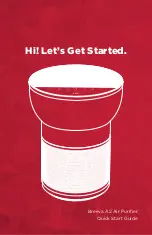
25
Regulations on wire size differ from locality to locality. For
field wiring requirements, please refer to your local electri-
cal codes. Make sure that the installation fully complies
with all local and national regulations.
(1) Remove access panel “C”. (Fig. 32)
(2) Connect the inter-unit and power supply line accord-
ing to the drawing on the panel side.
(3) Be sure to size each wire allowing approx. 4"
(10 cm) longer than the required length for wiring.
Store excess wiring inside the cabinet.
(4) When connections are completed, check that all con-
nections are correct as shown in the wiring system
diagram on panel side.
(5) Be sure to ground the unit according to your local
codes.
Fig. 32
Lock nut
Conduit
plate
Plug
Inter unit
(Conduit)
Power supply
(Conduit)
Cabinet
Terminal
block
Access panel “C”
Fig. 33
Conduit plate
Make sure there is no gap between
access panel “C” and the conduit plate.
Access panel C
CAUTION
6. Test Run
Performing a test run
G
Refer to the test run procedures in the indoor unit
installation manual.
G
Perform the test run separately for each connected
indoor unit. If 2 units are operated simultaneously, it is
not possible to correctly check for errors in tubing and
wiring.
G
If the room temperature is 59°F (15°C) or below, it may
not be possible to check for tubing errors with cooling
operation. If this occurs, perform heating operation for
each unit individually, and check that warm air is
discharged from each unit. If there is cold air mixed in
with the warm air, check the tubing connections again.
Checking tubing and wiring
Perform the test run and check that operation is normal. If
there is an error in tubing or wiring, the refrigerant may
flow to indoor unit B when indoor unit A is operated (for
example).
G
Stop operation immediately if there is an error in tubing
or wiring. Turn the power (breaker) to OFF, and check
whether the inter-unit cables are connected incorrectly,
or whether the narrow tubes A and B are connected in
reverse. Correct the connections.
G
If there is an error in tubing, pump-down must be per-
formed. Be sure to perform pump-down. After making
corrections, again purge the air from the tubes.
CAUTION
09-207 CMH3172A_OU 12/10/09 3:13 PM Page 25


































